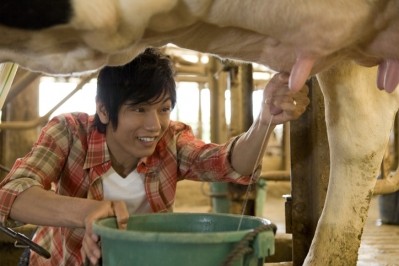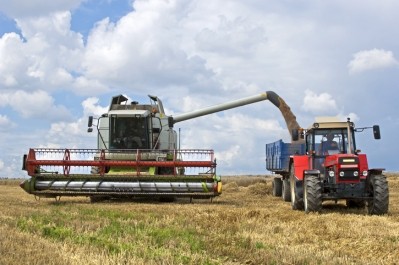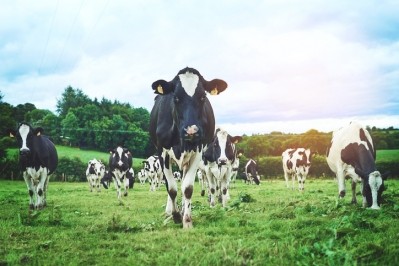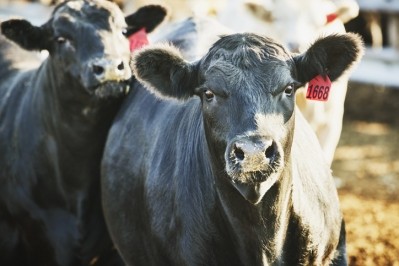Grazing, genetics and feed: How is Ireland tackling the methane emissions challenge in dairy cows?
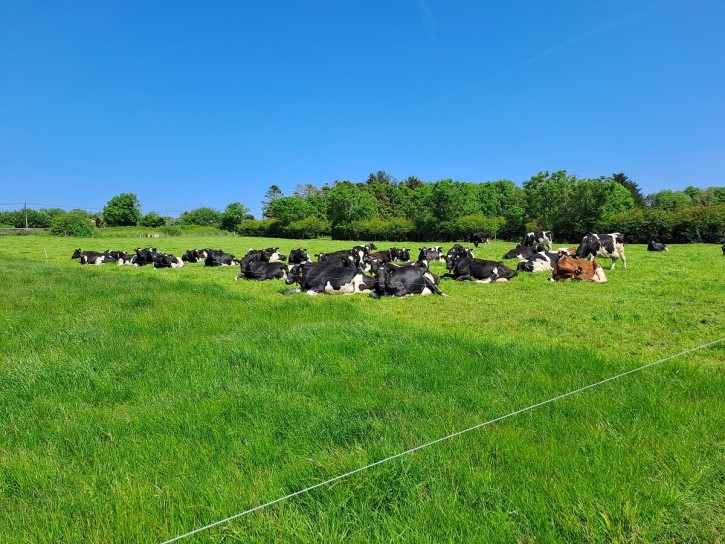
Work has been ongoing at Teagasc, the state agency providing research, advisory and education in agriculture, horticulture, food, and rural development in Ireland, for several years to identify the most effective approaches to cut methane emissions in ruminants.
Methane is a greenhouse gas (GHG) produced by the rumen during the digestion process; it contributes to 62.5% of Irish agricultural emissions.
We spoke to Dr Michael Dineen and Dr Ben Lahart, Teagasc research officers, to hear about a recent trial evaluating the impact of supplementing Irish dairy cows with DSM’s 3-NOP additive, Bovaer, to see how it works in the Irish context, as well as to hear about other approaches to methane mitigation the agency is investigating.
“Ninety percent of the milk is produced in a seasonal spring calving system in Ireland,” said Dr Lahart.
Typically, Irish dairy cows are maintained outdoors, grazing fresh pasture during the warmer months, being dried off and housed indoors in the winter months leading up to the spring calving period.
“A big focus of our research is to develop solutions that can reduce methane emissions in that scenario, in a grazing environment. We are looking at the role genetics can play, better grazing management and the potential of incorporating additives into the animals’ diet,” added Dr Lahart.
It is important to note that 74-77% of the Irish cow’s diet is fresh pasture, on a fresh weight basis, with grass silage and concentrates making up the remainder of their feed, said Dr Dineen.
Boosting efficacy of Irish dairy production
The VistaMilk SFI Research Centre, hosted by Teagasc and funded by Science Foundation Ireland (SFI) and the Irish Department of Agriculture Food and the Marine (DAFM), is looking to facilitate the development and deployment of new knowledge, innovative technologies, and new decision support tools to maximize the efficiency and effectiveness of the entire Irish dairy production chain.
Measuring methane output
There has been a significant amount of research done to date on methane emissions reduction in Ireland but one of the main hurdles up to recently had been how to go about generating routine data on percentage gains in a pasture-based production system, noted the two experts.
Teagasc has being investing in new methodology to measure methane release, such as C-Lock’s GreenFeed pasture system, allowing the team to now track output routinely, remarked Dr Dineen.
“It used to be quite challenging to measure methane emissions in a grazing system. We had laborious techniques that weren't conducive to routine measurements. But now with the GreenFeed system, we can measure methane output over the majority of the lactation period,” said Dr Lahart.
Animals are enticed to visit the GreenFeed unit with a small amount of concentrate, it works on spot measurement methodology, where cows come to the unit over a 24-hour period, at sporadic time points, spread a minimum of four hours apart. Each time the animal comes into the unit, its breath is sampled for methane output.
A non-dispersive near-infrared analyser can measure how much methane the cow is producing at that given time point. The units are solar powered and can be moved around the paddock.
“Cows need training to get them used to [the GreenFeed system] and to ensure there is enough visitation across the group,” explained Dr Lahart.
Feed additive research
Additives have gained increasing traction over the last few years, with some more promising than others, commented Dr Dineen.
From a grazing perspective, the researchers have seen limited results from using such inputs to reduce methane output. “Additives need to be consistently in the feed, and we are only supplementing them in compound concentrated feed at morning and evening milking time, so this will lessen the effect of any additives as they are only working for a few hours after milking. That is the big challenge we have within a grazing environment.”
However, the winter milk environment offers some mitigation opportunity.
“And, as we looked at the literature, we saw a strong, robust dataset for 3-NOP, with studies indicating it was quite promising in indoor feeding scenarios across the world.
3-NOP in the Irish context
“We didn't have any data in terms of feeding the additive to Irish cows under Irish conditions with Irish feeds or forages. So that gave us an added incentive to investigate it. Moreover, if we are thinking about inventories and being credited for use of the additive, we needed to prove it was effective in an Irish context.”
The six-week trial evaluating 3-NOP or Bovaer aimed to evaluate the impact of including the feed supplement on both the methane emissions and milk production performance of cows housed indoors on their winter diet.
Two experimental diets were established, and 44 cows were assigned to each. The diets, which had the same level of grass silage, maize silage and concentrate supplementation, differed only by inclusion (additive diet) or exclusion (control diet) of 3-NOP, which was supplied through Bovaer farm packs, and offered at a rate of 1.8g of 3-NOP per cow per day.
The GreenFeed technology was used to measure methane output.
Overall milk yield was quite similar – 29.8kg for the control and 30.4kg for the additive diet. Milk protein percent was slightly higher – 3.51% for the control versus 3.57% for the additive diet.
“Milk fat was similar – 4.60% and 4.63% - and we saw milk solids yield of 2.45kg/day for the control versus 2.50kg/day for the additive diet – a 2% increase in milk solids yield when 3-NOP was included in the diet.
“The more crucial metric for this investigation was looking at methane production. We looked at in terms of absolute methane – the grams of methane per cow per day - and we found on the control diet with no 3-NOP, the cows produced 447g/day of methane, whereas the 3-NOP fed cows produced 330g/day of methane which equates to a 26% reduction in methane output per cow.
“We also looked at it in terms of the intensity of methane production – grams of methane per kilogram of milk solids - and we found that the control cows produced 182g of methane per kilogram of milk solids, whereas the 3-NOP fed cows produced 132g of methane per kilogram of milk solids – a 27% reduction in methane output,” reported Dr Dineen.
The results were promising and tended to match the results reported in the literature, he added.
“We proved its efficacy in an Irish setting.”
The additive would still need to be evaluated from an economic perspective, he stressed.
“It is important we keep developing a number of solutions now as an industry to ensure both environmental sustainability and economic sustainability is achieved for producers.”
Sustained release systems
Sustained release methane inhibitor technologies such as bolus-based systems could be another solution for grass-fed animals. More research needs to be done on those, said Dr Lahart.
“But if you can get a good, controlled release of a specific additive that is consistent and safe, the bolus offers the ideal opportunity and may also prove a promising route for methane mitigation in grass-fed beef cattle that are not fed a lot of concentrates.”
Forage and grazing management
Teagasc has also been heavily focused on optimal forage and grazing management techniques as a way to reduce methane output, said Dr Dineen. “Historically, we would have looked at grass quality, pre-grazing yields, cow genotype, and there is renewed interest in that kind of work now, in evaluating multi-species swards.”
And additional element of that work may be developing mechanisms to measure grass quality so farmers could get credit for better grassland management, said Dr Lahart.
Breeding
It may also be possible to genetically select for low methane emitting cows in the future, said the Teagasc researchers. “One of the attractions of breeding is that the effects are long-lasting, going from generation to generation, if it is done right.
“We know there is a negative relationship between fertility and milk production; previously it was thought that you couldn’t breed for the two, but, with our index in Ireland, we have shown that you can actually do so if your breeding index is constructed appropriately. So, if you could include methane in a selection index at the appropriate weightings then you could potentially select for a low methane cow in the future without negatively impacting any other important parameters,” commented Dr Lahart.
Both experts report observing phenotypic variation when it comes to methane emissions in cows, but say more data is required to quantify how much of this variation is due to genetics in grazing settings as well as understanding the relationship between methane and other important traits.
There is a lot of work required to develop mechanisms to actually phenotype cows, to be able to generate breeding values for them. “We have collected around 400 records of animals to date and, as that data grows, we'll be able to understand the genetic architecture of methane emissions and how much variation is due to genetics.”
